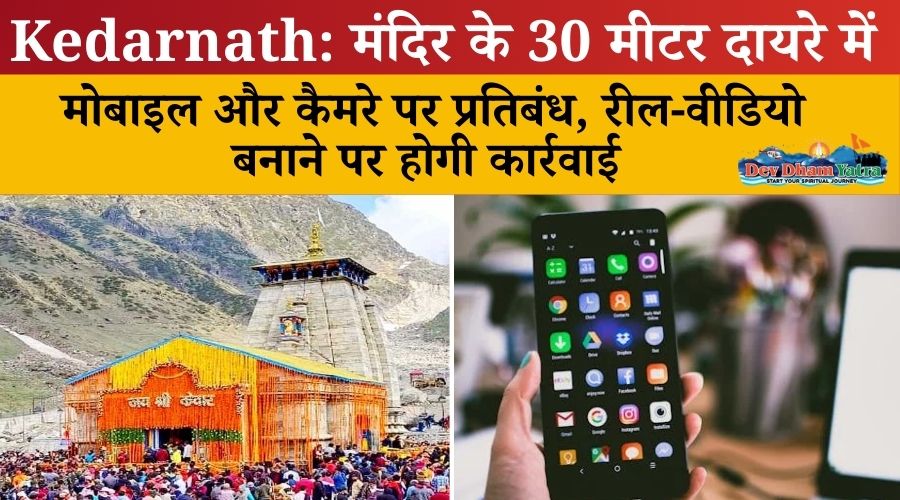About Amarnath Temple
Hindu shrine known as the Amarnath Temple is situated in Jammu and Kashmir, India, in the Pahalgam tehsil of the Anantnag district. A cave located at an elevation of 3,888 m (12,756 ft). about 168 kilometres from Anantnag city, the district centre, and 141 km (88 mi) from Srinagar, the summer capital of Jammu and Kashmir, reachable through either Sonamarg or Pahalgam. It is a revered Hindu shrine. The cave, located in Sind Valley, is generally hidden by snowy mountains and glaciers for the bulk of the year, with the exception of a brief window during the summer when pilgrims can enter. There were 12,000 to 30,000 pilgrims in 1989. The number of pilgrims peaked in 2011 when it exceeded 6.3 lakh (630,000). There were 2.85 lakh (285,00) pilgrims in 2018. Between 20 and 60 days are spent on the annual trip.
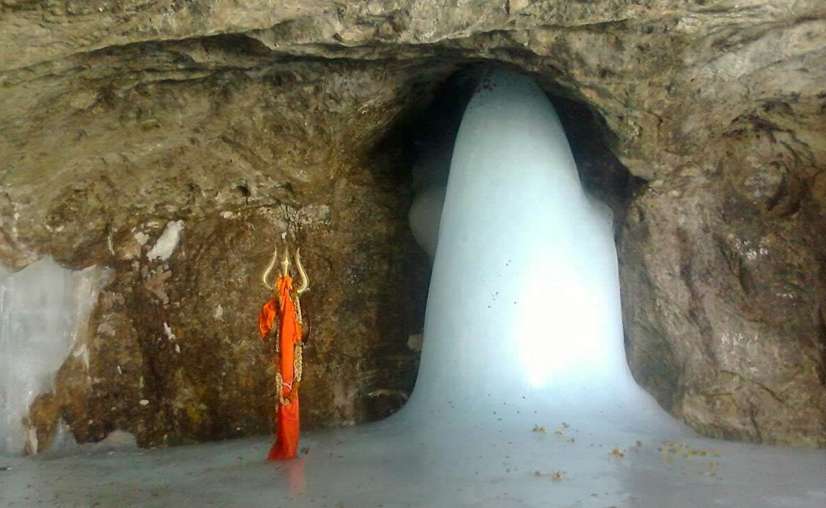
One of the 51 Shakti Pithas, or temples in the Indian Subcontinent dedicated to the goddess Shakti, is the Mahamaya Shakti Pitha, which resides in the Amarnath cave. Swayambhu lingam is the type of Shiva lingam found at the shrine. On the Amarnath Mountain, which has a peak elevation of 5,186 metres (17,014 feet), the lingam is a naturally occurring stalagmite( creation inside a 40 m (130 ft) tall cave. When water drops from the cave’s roof fall and freeze on the ground, they develop an ice formation upward, creating the stalagmite. The lingam, a tangible representation of Shiva, is thought to be formed here by the stalagmites, which take the form of a solid dome. According to legend, Parvati and Ganesha are symbolised by two smaller stalagmites.
Shiva is symbolised by a lingam, according to the Mahabharata and Puranas, two classical Hindu writings. From May to August, the lingam waxes as snow in the Himalayas above the cave melts and water seeps into the cave’s rocks. After that, the lingam gradually wane . According to religious doctrine, the lingam expands and contracts in accordance with the phases of the moon, reaching its peak during the summer festival. According to Hindu mythology, this is where Shiva revealed to his holy wife Parvati the meaning of life and eternity.
The Amarnath Yatra
The Shravani Mela, which takes place in July-August (Shravan month in the Hindu calendar) and is the only time the Amarnath Cave is open to the public throughout the entire year, draws thousands of pilgrims to the Amarnath yatra each year. The cave is located at 3,888 metres above sea level, 141 kilometres from Srinagar, the capital of Jammu and Kashmir. Pahalgam is the closest town to the cave. In Hinduism, Amarnath is regarded as one of the holiest sanctuaries and has a significant role to perform. The annual “Amarnath Yatra” is commemorated by the “Pratham Pujan,” which is claimed to evoke Baba Amarnath’s blessings.
Additionally, because the ice is made from the water that drips from the cave’s roof as a result of the ice melting on top of it, the ‘lingam’ is at its largest in the summer, from July to August, when the ice caps surrounding the cave are melting. The cave’s formation is caused by water seeping into the rocks, which then gradually dry up. Reportedly, the lingam expands and contracts in accordance with the phases of the moon, reaching its peak during the summer festival, according to religious beliefs.
Amarnath Temple History
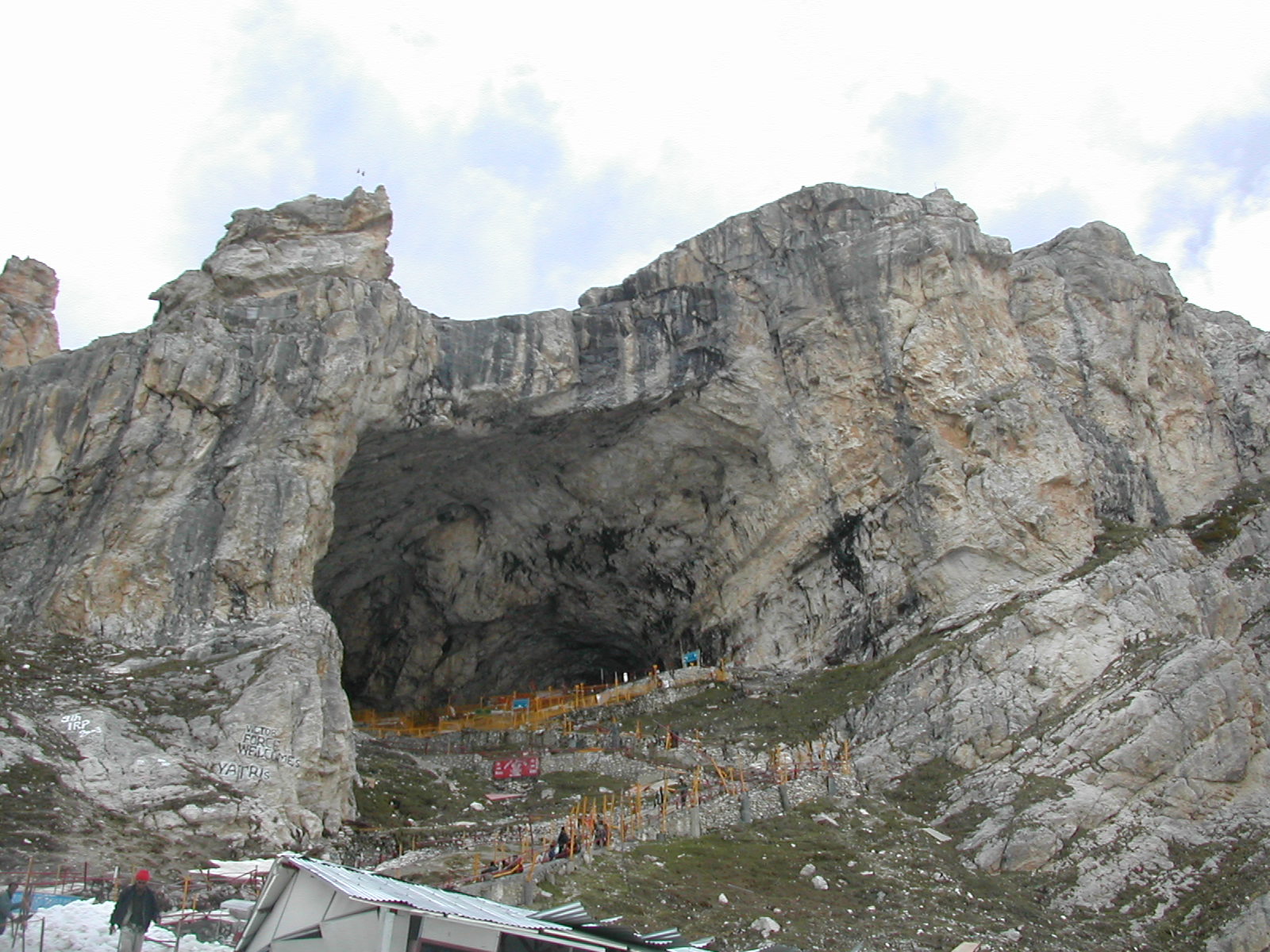
According to legend, the cave was first found by a shepherd by the name of Buta Malik. However, the Amarnath Temple (also known as Amareshwar) is mentioned in the book “Rajatarangini,” and many people think that Queen Suryamathi gave a gift of Trishul, banalingas, and sacred emblems to the Amarnath Temple in the 11th century AD. Moreover, the Quess Suryamthi legend was forgotten when Buta Malik found the cave in the 15th century.
As a result, Buta Malik was shocked to find gold coins at home after returning from receiving a bag of coal from a saint. He was appreciative but also overjoyed. And when he returned to the spot where he had first encountered the saint to express his gratitude, he discovered the cave housing the Shivling instead. This resulted in Amarnath Cave’s discovery. It later developed into a significant Hindu pilgrimage site.
A distinct story is told in various other epics. Kashyap Rishi, according to legend, drained the Kashmir valley through a number of rivers and rivulets when it was submerged. The holy Amarnath Cave was originally seen by Bhrigu Rishi during his tour to the Himalayas at the same time period. As soon as the locals learned about it, it immediately rose to prominence as Shiva’s home and a major site of worship. Since then, a great number of pilgrims have travelled on the Amarnath Yatra over difficult terrain in search of everlasting pleasure.
How Do You Get to Amarnath Cave?
In addition to public transport buses, private vehicles can be rented to go from Jammu to Pahalgam and Baltal. Amarnath Cave may be reached by two different trekking routes: the traditional one through Srinagar and the shorter one via Baltal. You might choose to travel to Amarnath Yatra by helicopter rather of the exhaustingly lengthy and strenuous hike.
Through Baltal
The quickest route travels through Sangam, Baltal, Domial, Barari, and Chandanwari base in Pahalgam. It is 14 kilometres long and you may make the entire journey in one to two days. You have two options: you can choose to walk or hire a palki, a seat carried by individuals.
from Pahalgam
It takes three to five days to go one way via Pahalgam to reach Amarnath Cave. Compared to the Baltal route, this one is significantly wider and easier for pilgrims to travel. You can even hire horses to transport you the entire way to the Amarnath Temple.
by helicopter, getting to Amarnath
A helicopter flight will also get you to the Amarnath Temple. Drive to Baltal and board a helicopter to be flown up to Panchtarni after landing in Srinagar. You can either hire a palki or horse ride to take you the last 6 kilometres of your walk from Panchtarni.

The Amarnath Legend
According to tradition, Lord Shiva had to accede to Goddess Parvati’s demands to learn the truths of life and death, but he couldn’t take the chance of someone listening in. So they started travelling to a mountain cave that could only be accessible by the gods themselves due to its extreme difficulty. Because the information was so sensitive, all of the companions had to be left behind as well. Thus, his mount, a bull named Nandi, was left at Pahalgam, as were the moon atop his head, the serpent around his neck, the five essential components he carried, Panchtarini, and even his son, Lord Ganesha, at Mahaguna Top. Hindu devotees are now yearly found making this treacherous mountainous trek.
But the Amarnath Yatra goes beyond a simple pilgrimage. Even the most agnostic among us can’t resist visiting the neighbouring tourist sites. Amir Khusro once dubbed Kashmir “Paradise on Earth,” and he was absolutely correct. Srinagar, Gulmarg, and Sonamarg are a few of the must-see locations that you can see in one trip.
Advice for Travellers Before the Amarnath Yatra
- Before embarking on the Amarnath Yatra, you must complete an online registration form.
- You must fill out an application form, which can be found on the internet. • Be sure to include your full name, gender, address, state, and phone number.All bank branches will register customers.
- Always have plenty of paper towels, soap, and napkins on hand. Bring at least two pairs of shoes and lots of socks.
- Include enough cheese cubes, apples, dry fruits, and chocolates to keep you going, as well as medications such as crocin, pain killers, and anti-allergy tablets. Bring a lot of warm clothes.
- Pre-activated SIM cards must also be obtained in the base camp of Baltal and Nunwa
- Improve your physical fitness before travelling on the Amarnath Yatra. The Amarnath Yatra is not open to anyone under the age of 13 or anyone above the age of 75.
- Carry adequate paper towels, soap, and napkins. Keep in mind to bring two pairs of shoes and enough socks.
- Carry enough cheese cubes, apples, dry fruits, and chocolates to stay energised.
- Do not forget to bring medications with you, such as crocin, painkillers, and anti-allergy tablets. Bring along enough warm clothing.
Tourist Attractions Near Amarnath Shrine in Jammu and Kashmir, India
Baisaran(35)
Another name for Baisaran is “Mini Switzerland of India.” Visit Baisaran Lake, a beautiful expanse of green grassland bordered by pine trees and snow-capped mountains. For lovers of nature, it is a wonderful location.
Thulian Lake(40)
In Tulian Lake, you can see the snow-white ice drifting. Mountains, pine trees, and other mountain vegetation surround the lake. Feel yourself being held by nature. For mental peace, sitting next to the lake will be a divine experience.
Pahalgam (50 km)
The Amarnath Pilgrimage uses Pahalgam as a hub. With its many meadows, Pahalgam is nestled in Lidder Valley. For those travelling to Jammu and Kashmir
Mamal Temple(50KM)
Mamal Temple was allegedly constructed in the fourth century. According to folklore, the Mamal Temple was erected in remembrance of the time when Lord Shiva designated Lord Ganesha as the doorkeeper in order to prevent anyone from entering his residence. The great Kalhana epic Rajtarangini makes reference to the Mamal or Mamaleshwar Temple.
Valley of Aru (60 km)
Aru Valley is simply another one of Kashmir’s gorgeous valleys. Skiing and heli-skiing are available here, as well as other well-liked tourist activities including trekking, hiking, horseback riding, sightseeing, and photography. Trout fishing is also permitted in the Lidder River.
Read more content:
Kedarnath Yatra | Packages
Chardham Yatra | Packages
Do Dham Yatra | Packages
Camping and Rafting | Packages
Chardham Yatra by Helicopter| Packages
Book Your Yatra Easily: Download Our Official App

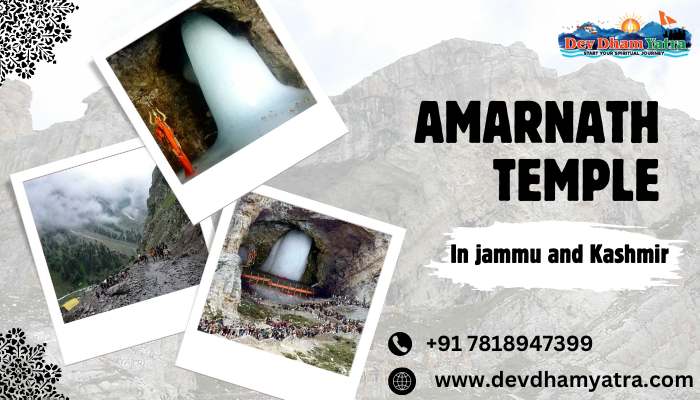
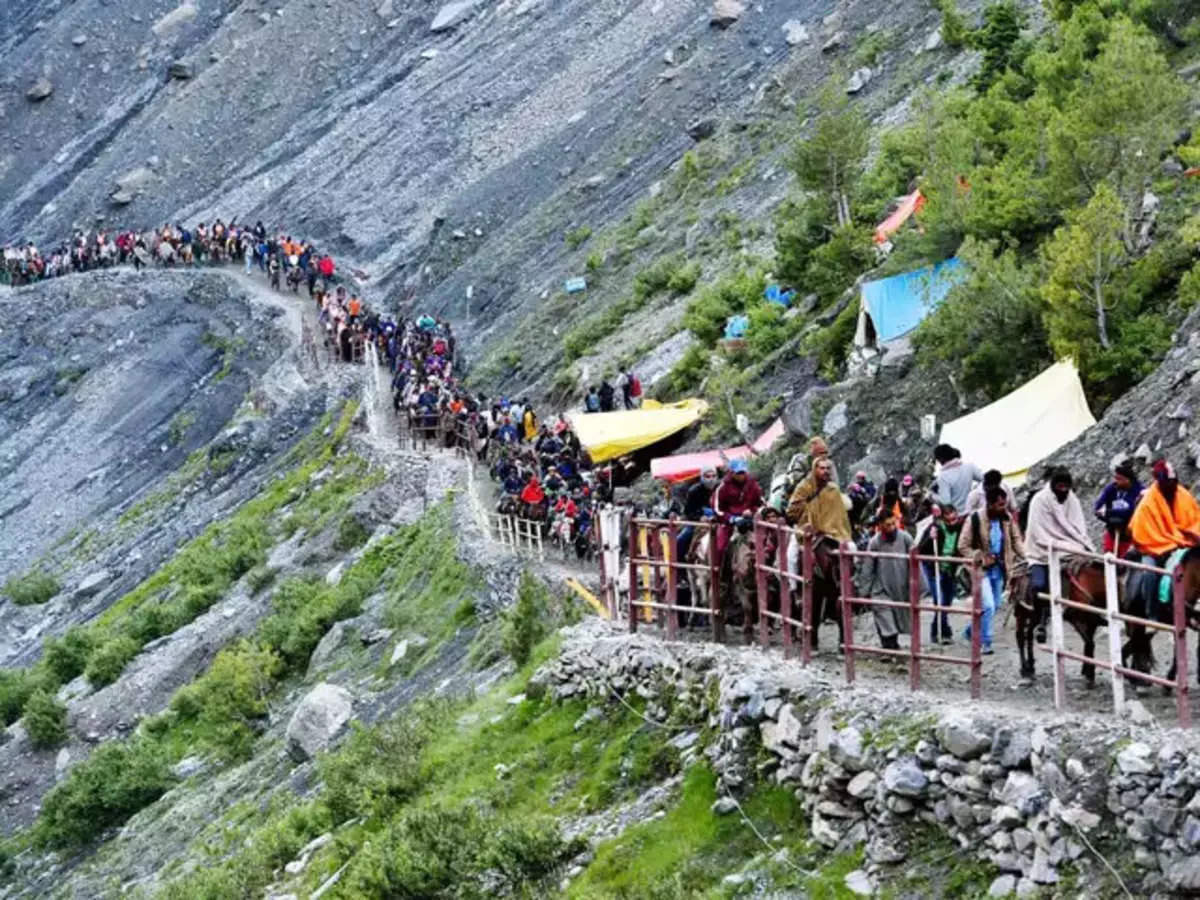




 Shri Eklingji Temple in Udaipur, Rajasthan – A Sacred Marvel of Mewar
Shri Eklingji Temple in Udaipur, Rajasthan – A Sacred Marvel of Mewar 




